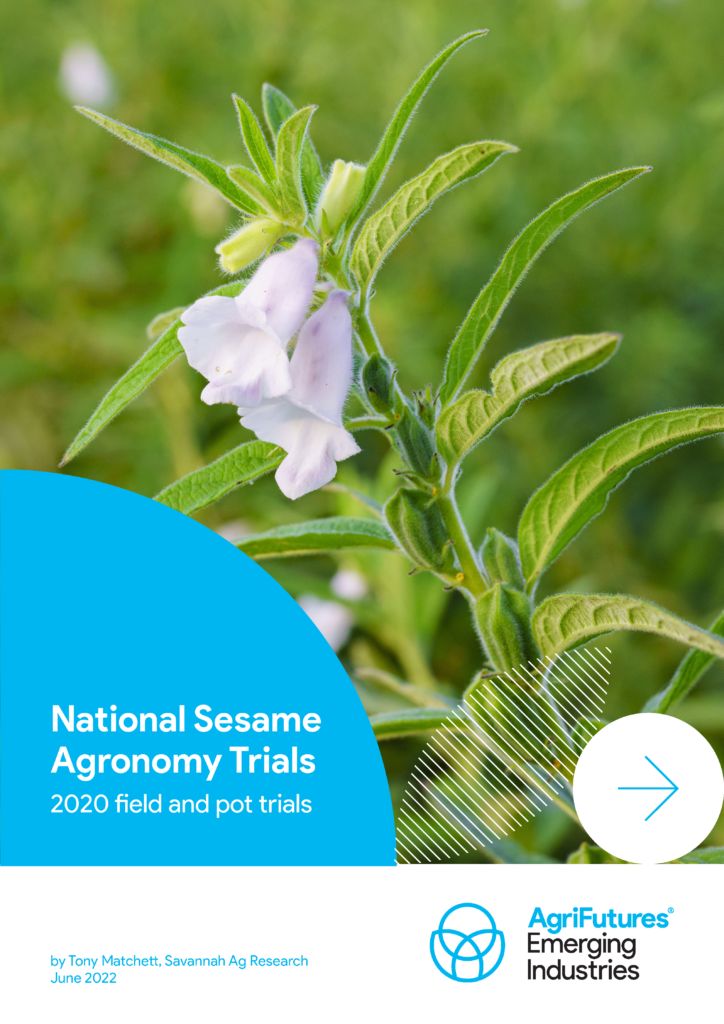Sesame (Sesamum indicum L.) is one of the oldest recorded oilseed crops. It is cultivated for its edible seeds, eaten as they are or added as an ingredient in meals, and for its oil, which is used in cooking. Due to its antioxidant content, among other benefits, sesame is also used in nutraceuticals and pharmaceuticals.
Sesame is a US$2.2 billion industry globally, with six million metric tonnes (mmt) produced and 2.5 mmt traded annually. Australian and global demand for sesame continues to grow and opportunities for new markets and new uses are becoming evident.
A sesame industry in Australia has previously failed to establish due largely to the lack of suitable genetics and processing facilities. With the advent of new seed technology, sesame is now an option for Australian farmers looking for a high-value, drought-tolerant crop suited to many new and established farming regions across the country. The strong and increasing demand for sesame, both domestically and internationally, provides further impetus for the commercial production of Australian sesame.
Australia has significant areas of land suited to sesame production and its competitive advantages of clean, green, high-quality production and high-productivity agriculture are supported by a culture of innovation and proximity to export markets. Australia also has the capacity to develop domestic processing facilities and new and value-added products to service the domestic and international markets that desire high-quality produce, of known quality and provenance, with a consistency of supply.
As part of a broader project addressing research and development activities that encourage growers to adopt sesame into their cropping rotation by delivering confidence in the production system, this project evaluated the effect of time of sowing (TOS) and sowing density on the yield of new sesame genetics from Equinom (white sesame) and Agriventis (black sesame) across four northern Australian environments. It also investigated the impact of a range of pre-emergent and post-emergent broadleaf herbicides on sesame.
In terms of maximising yield, sowing density appears to be secondary to time of sowing. A fair yield for white sesame sown mid-December at medium densities (5-10 plants/metre of row) is 1.5 t/ha based on the results of this research. Further yield gains are expected with better in-crop nutrition, improved weed control and protection against insects and diseases.
Weed control prior to and during growing sesame is a high priority. Sesame is a weak competitor in the first 35 days, so effective pre-plant weed control is critical to reducing this pressure. The post-emergent herbicide pot trials carried out as part of this project indicate Basagran, Lontrel, Brodal and Kamba are likely suitable options. However, additional in-crop selective control options are required to ensure sesame yields can be maximised.





